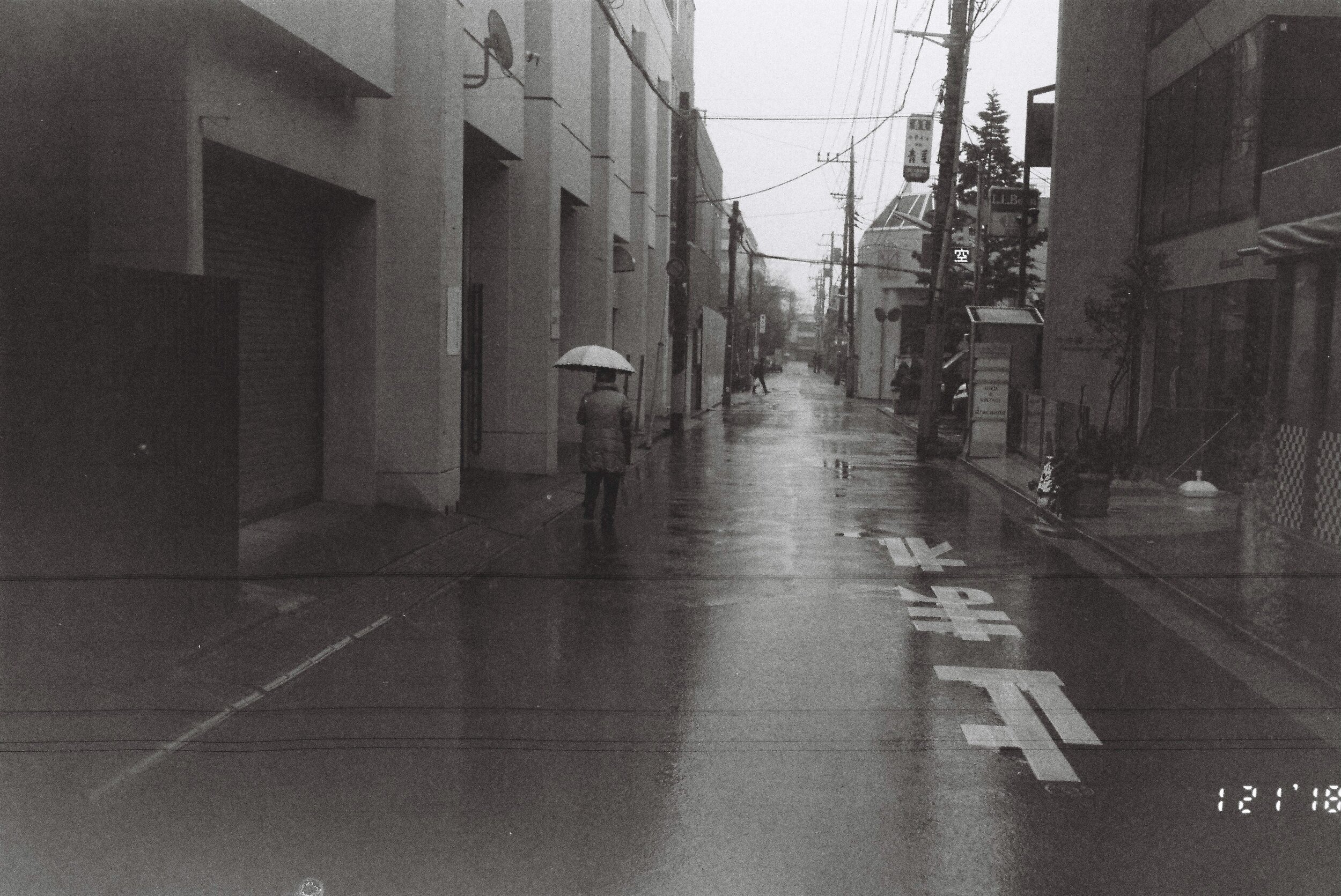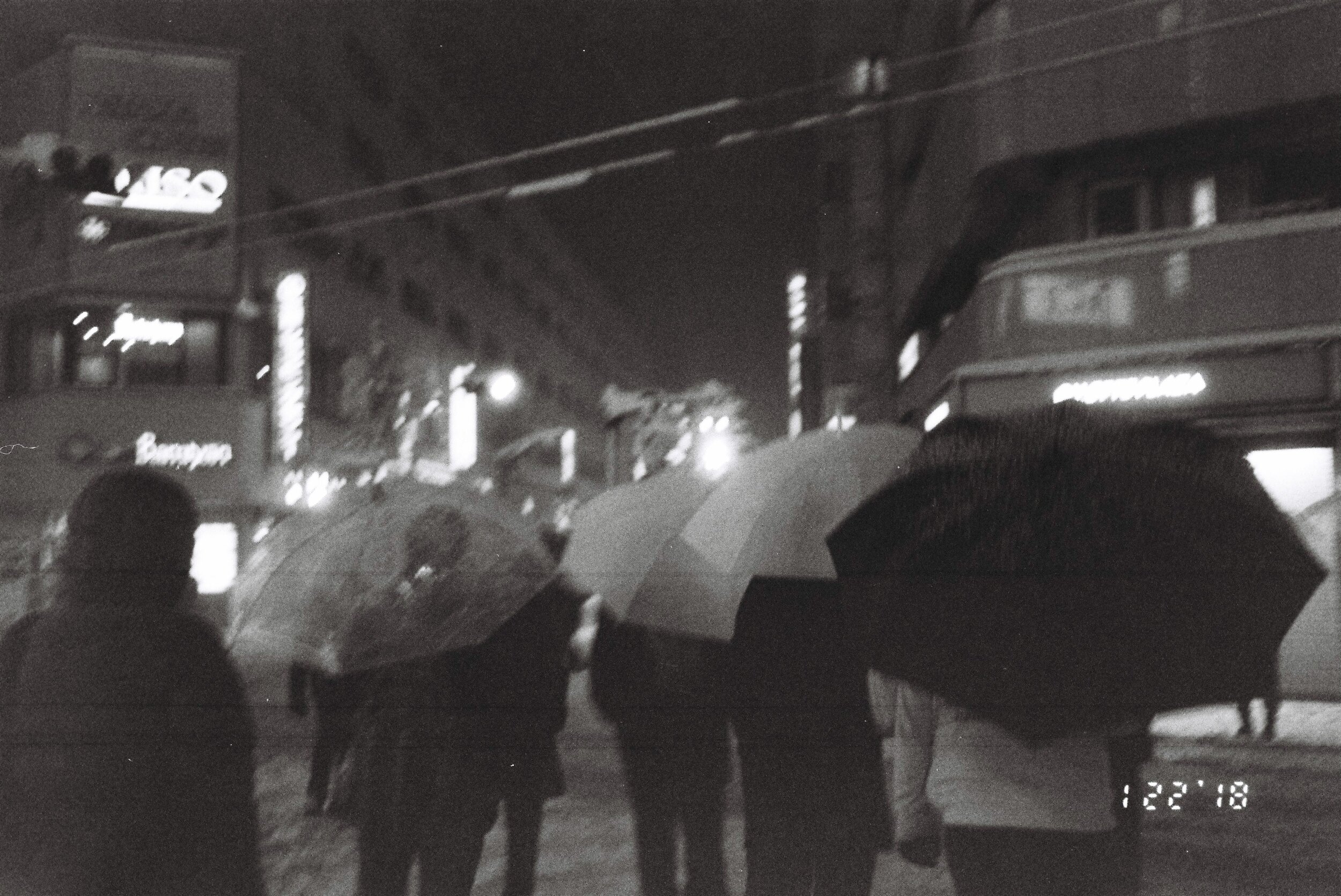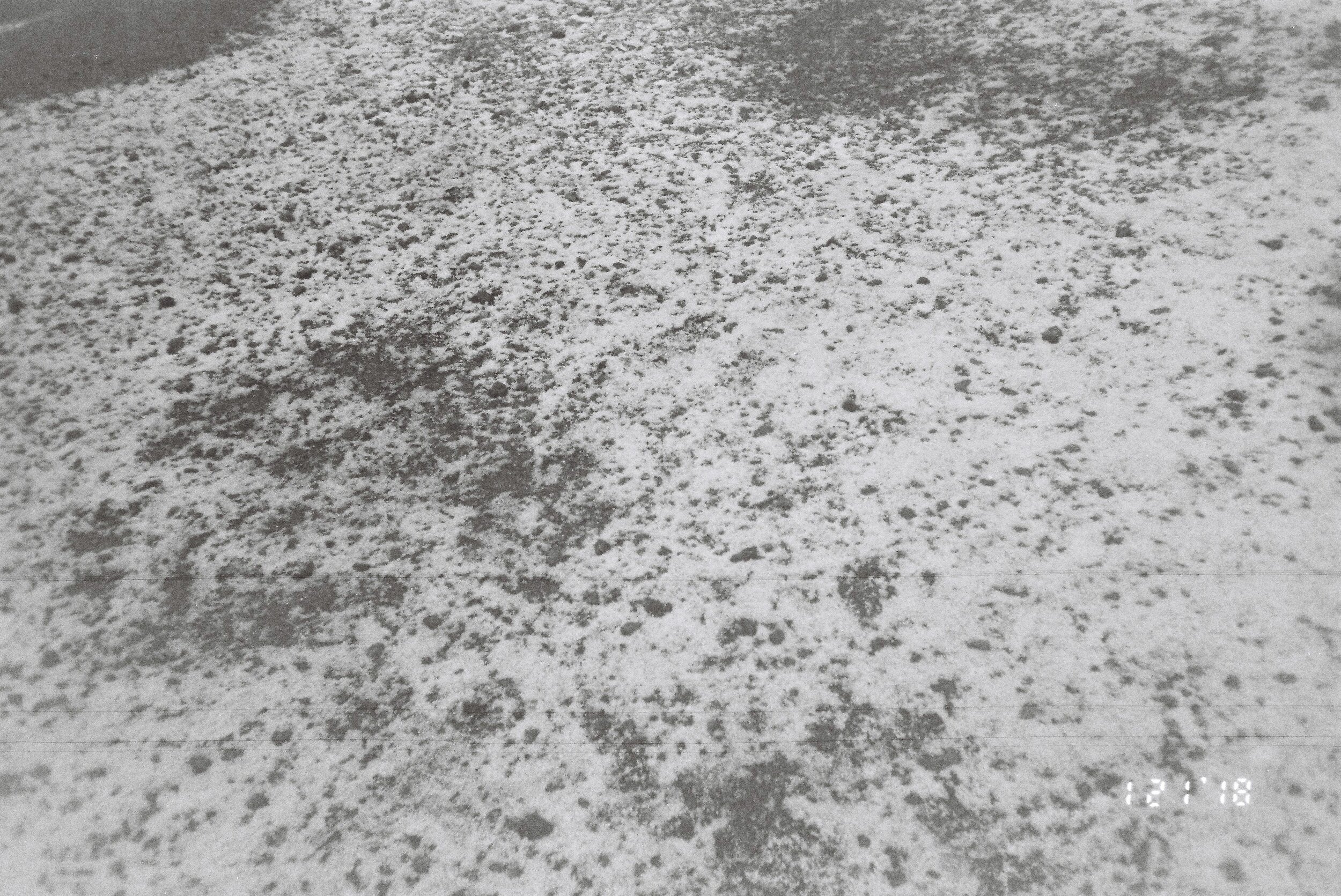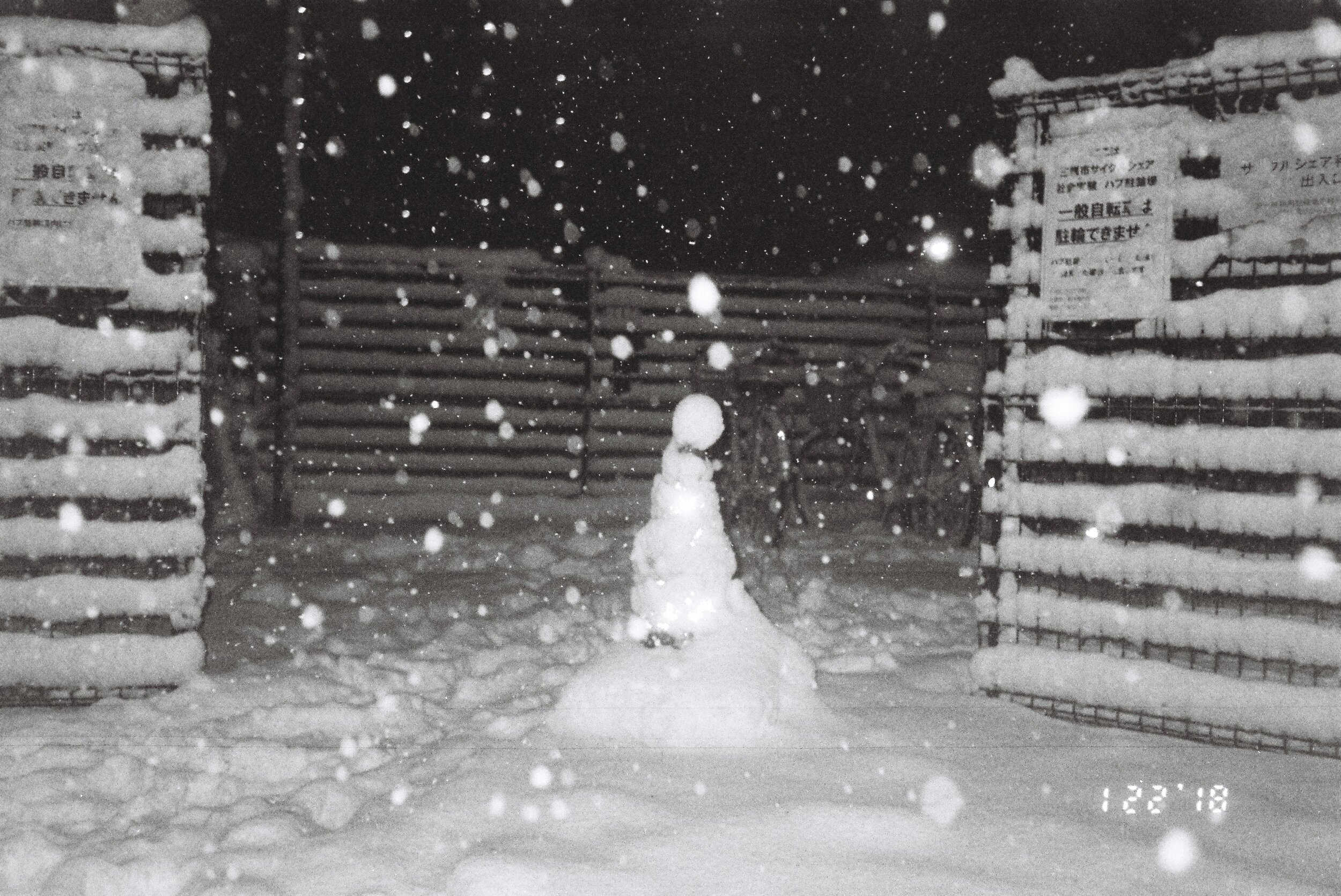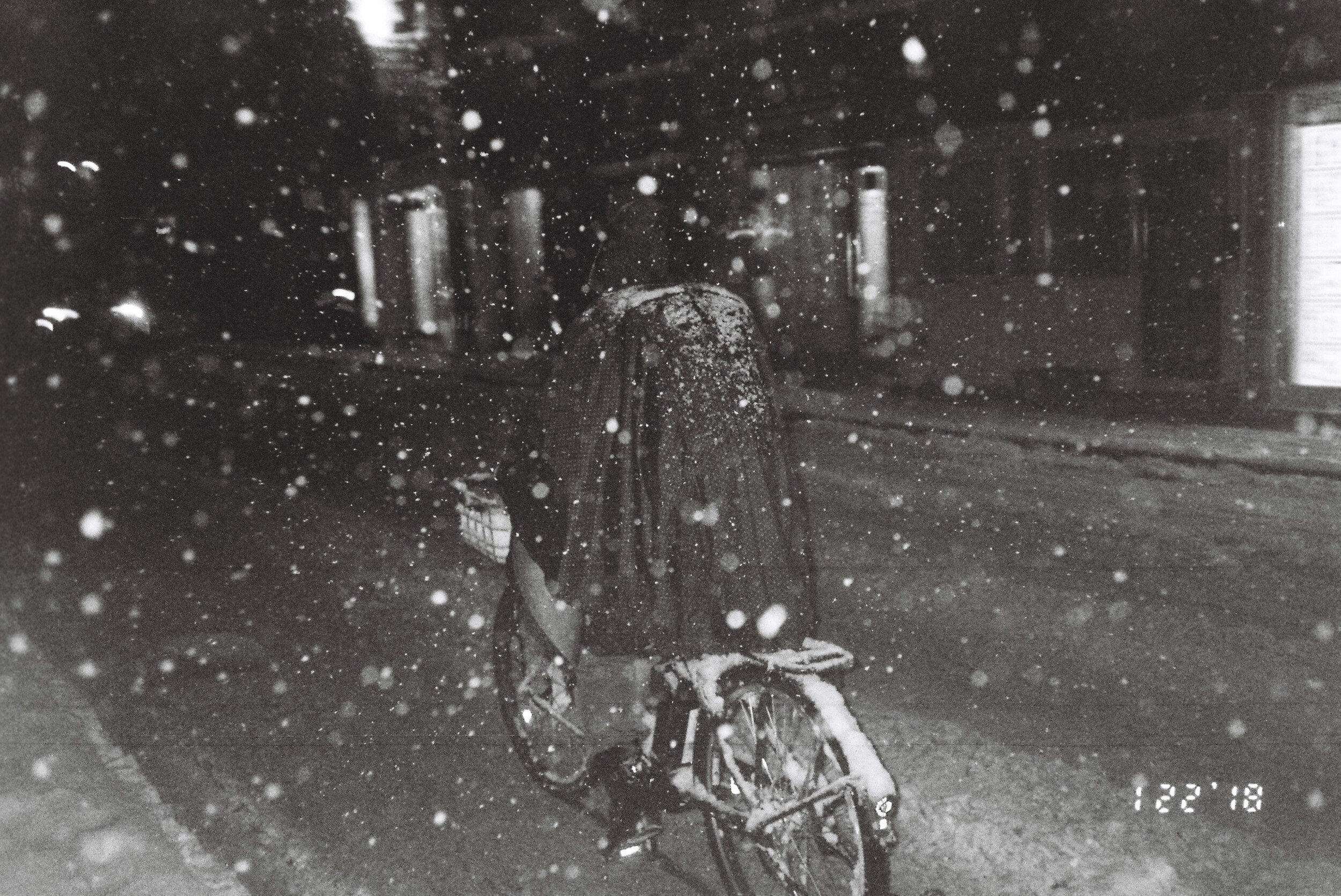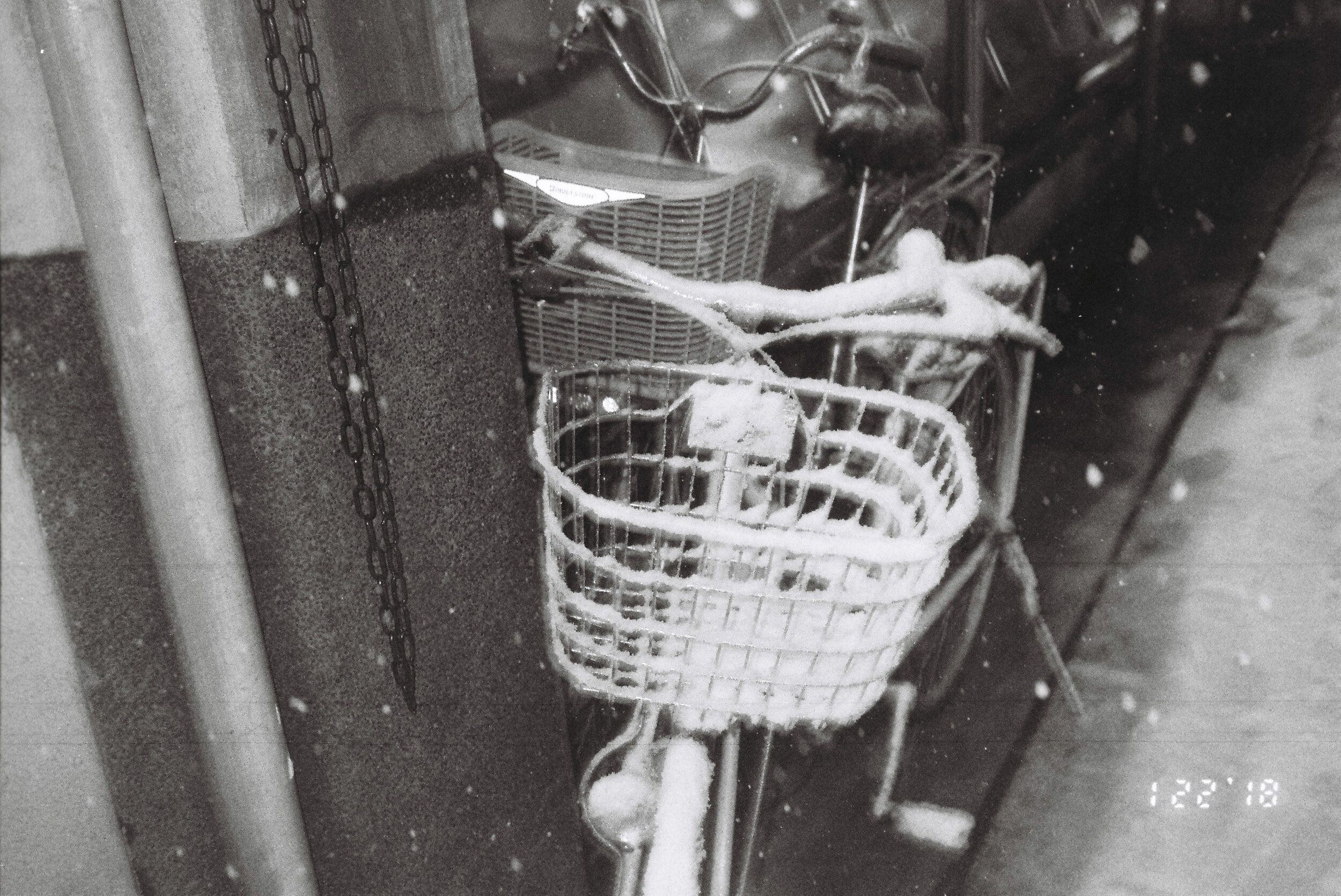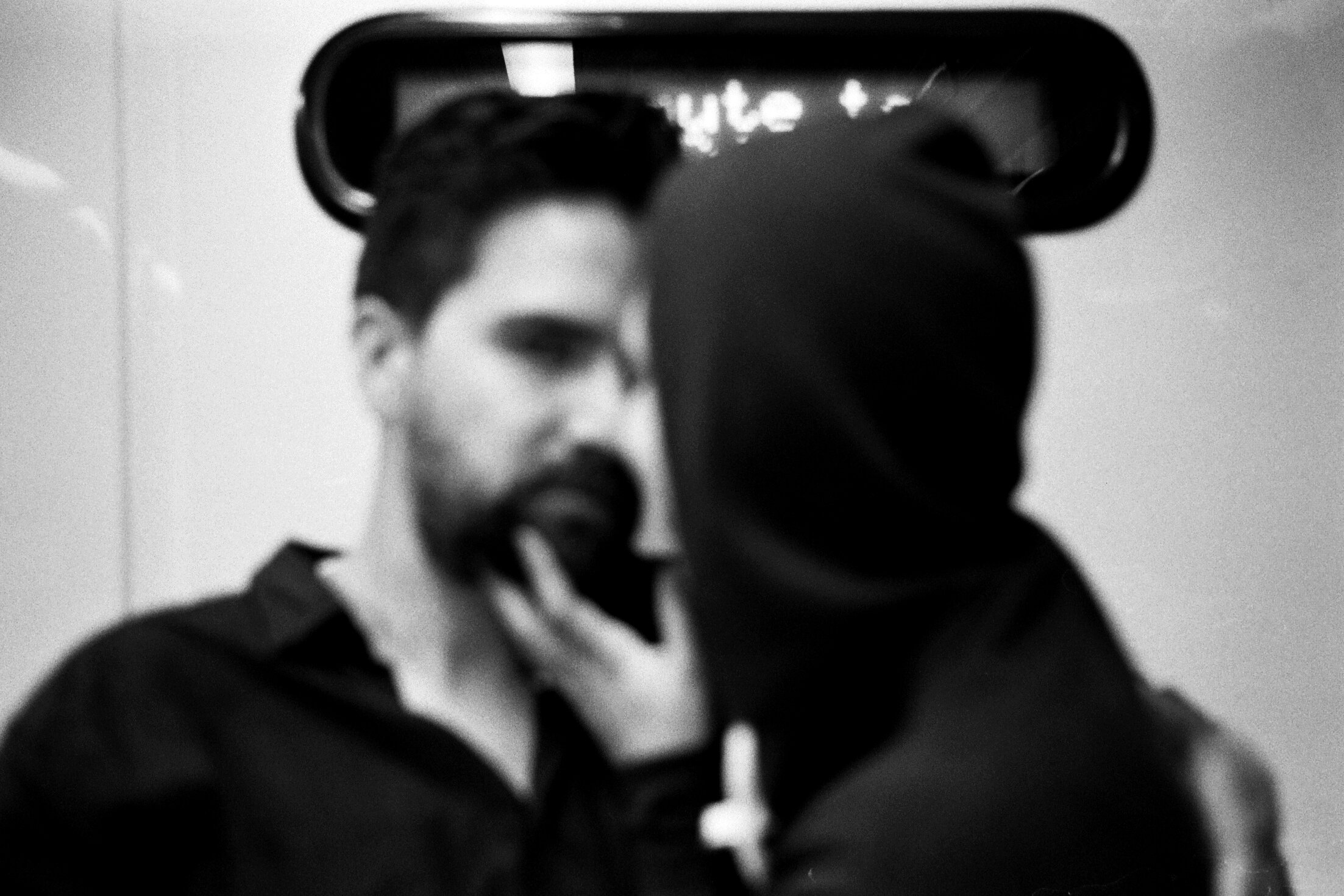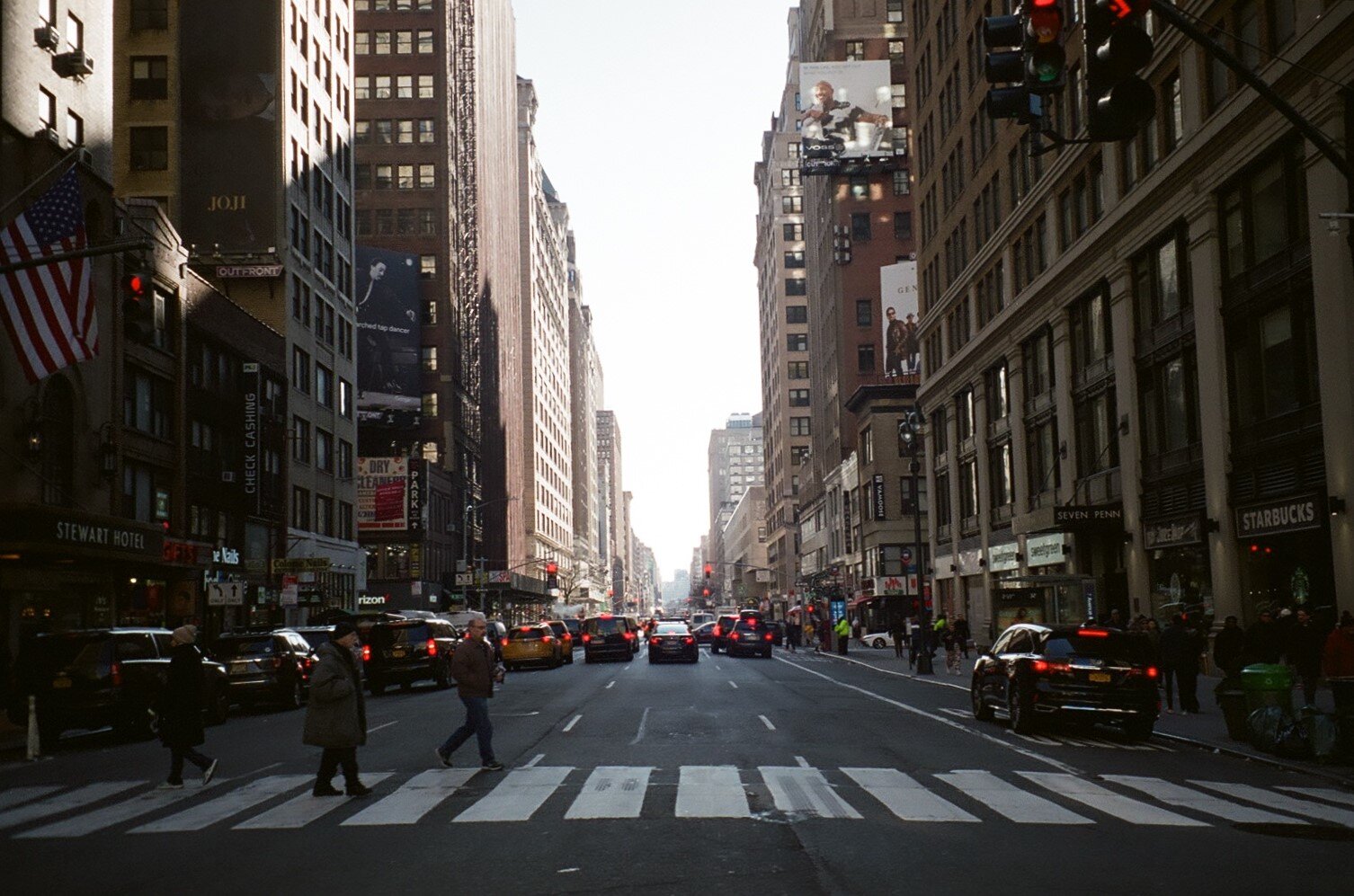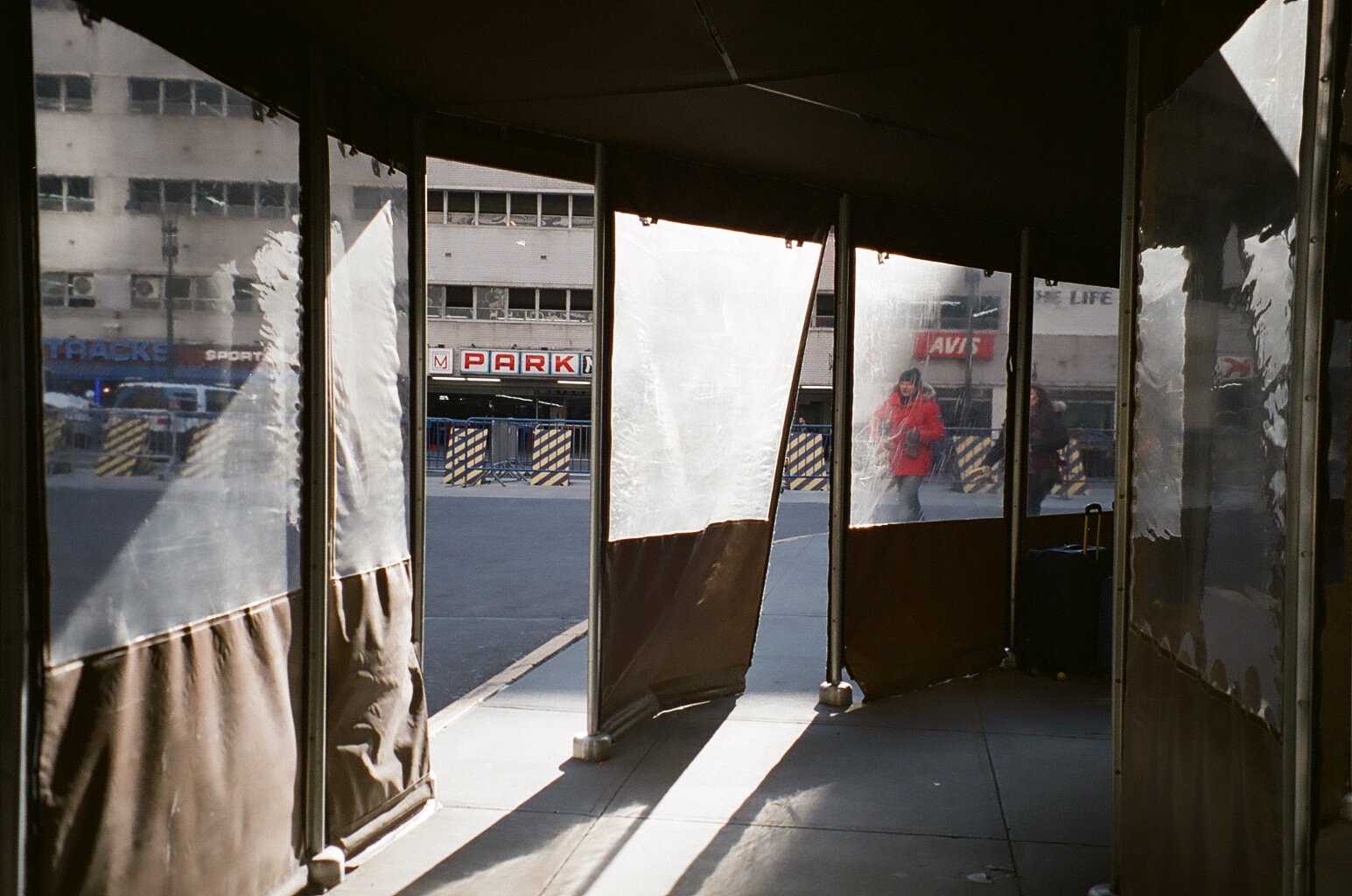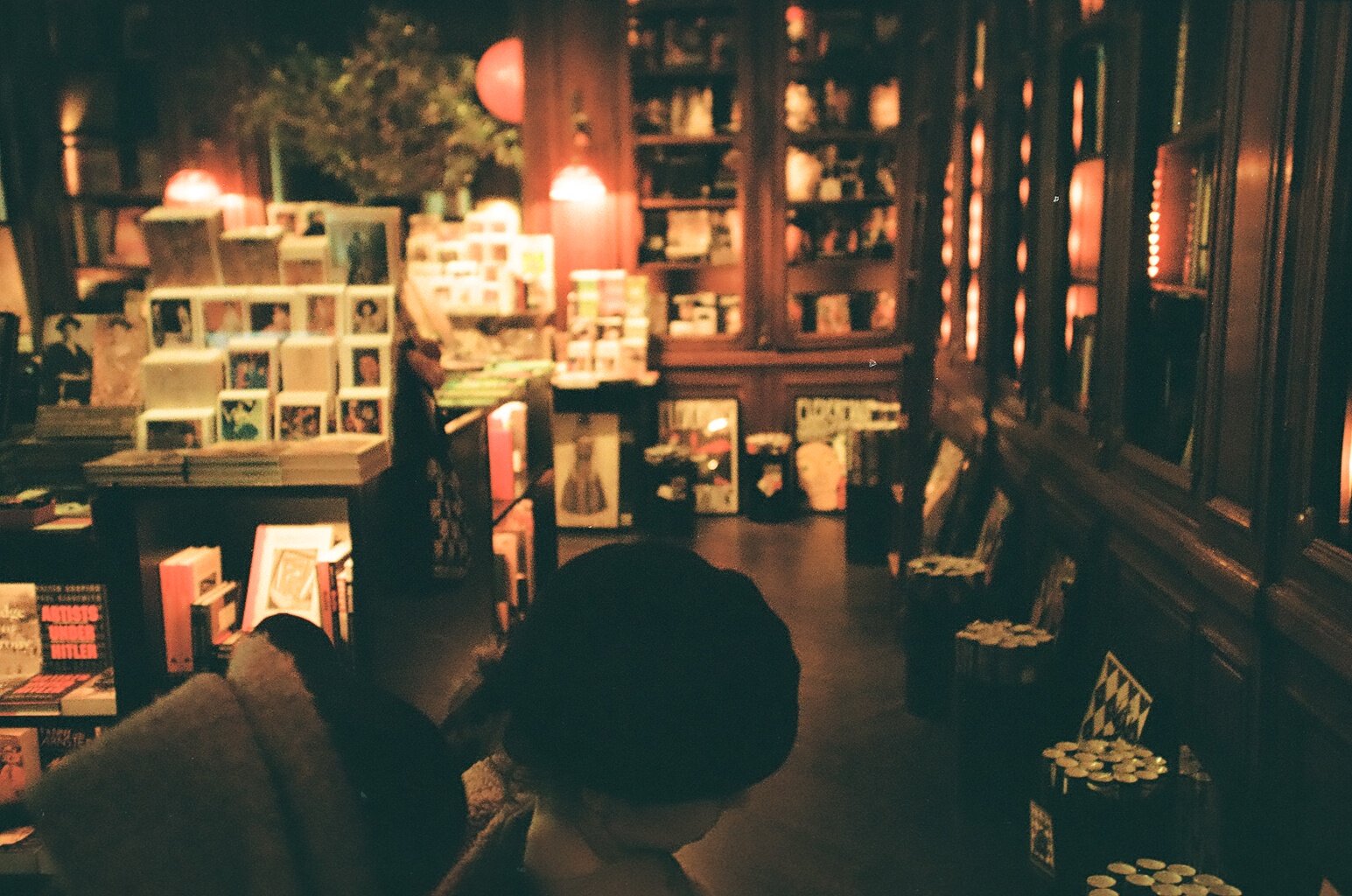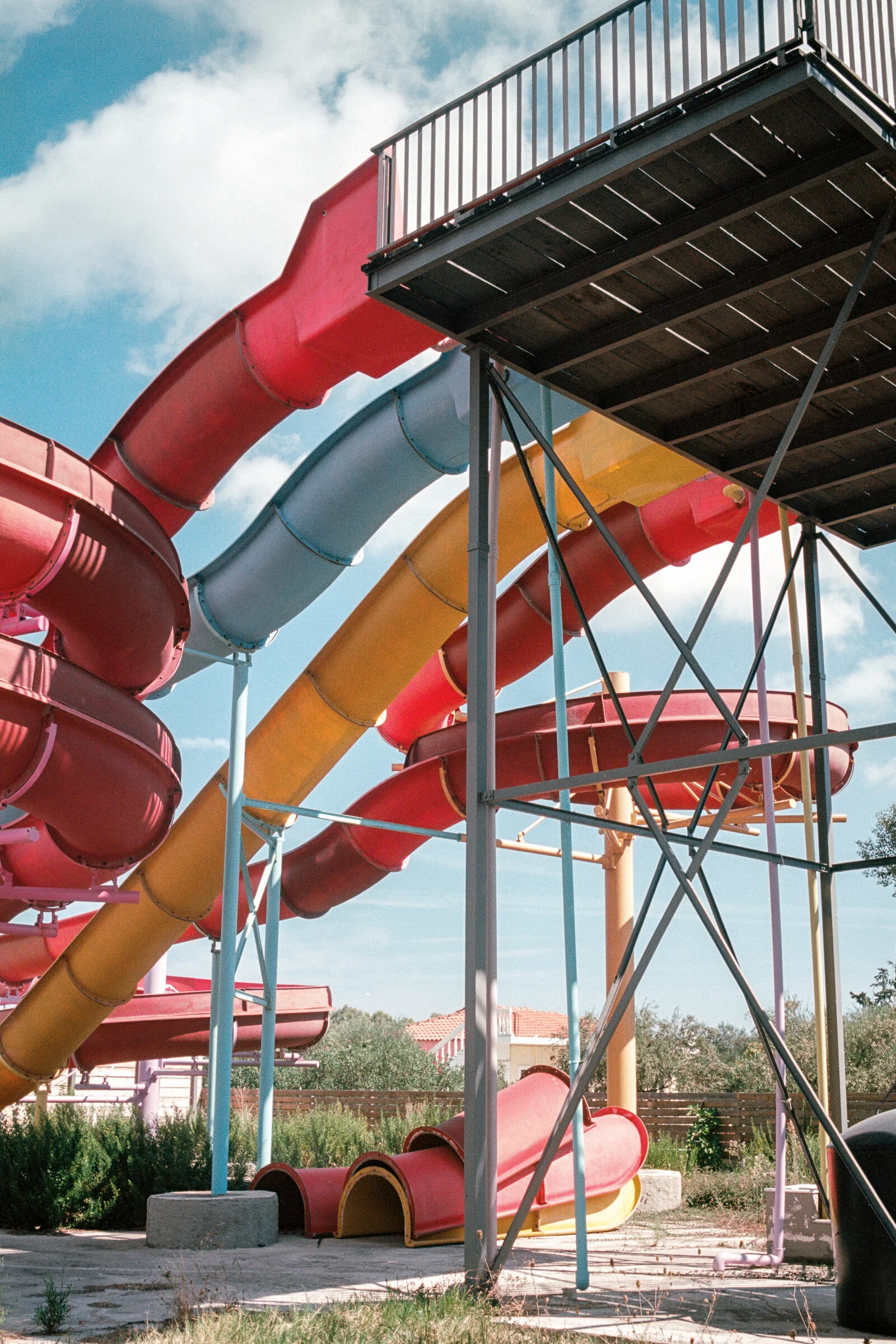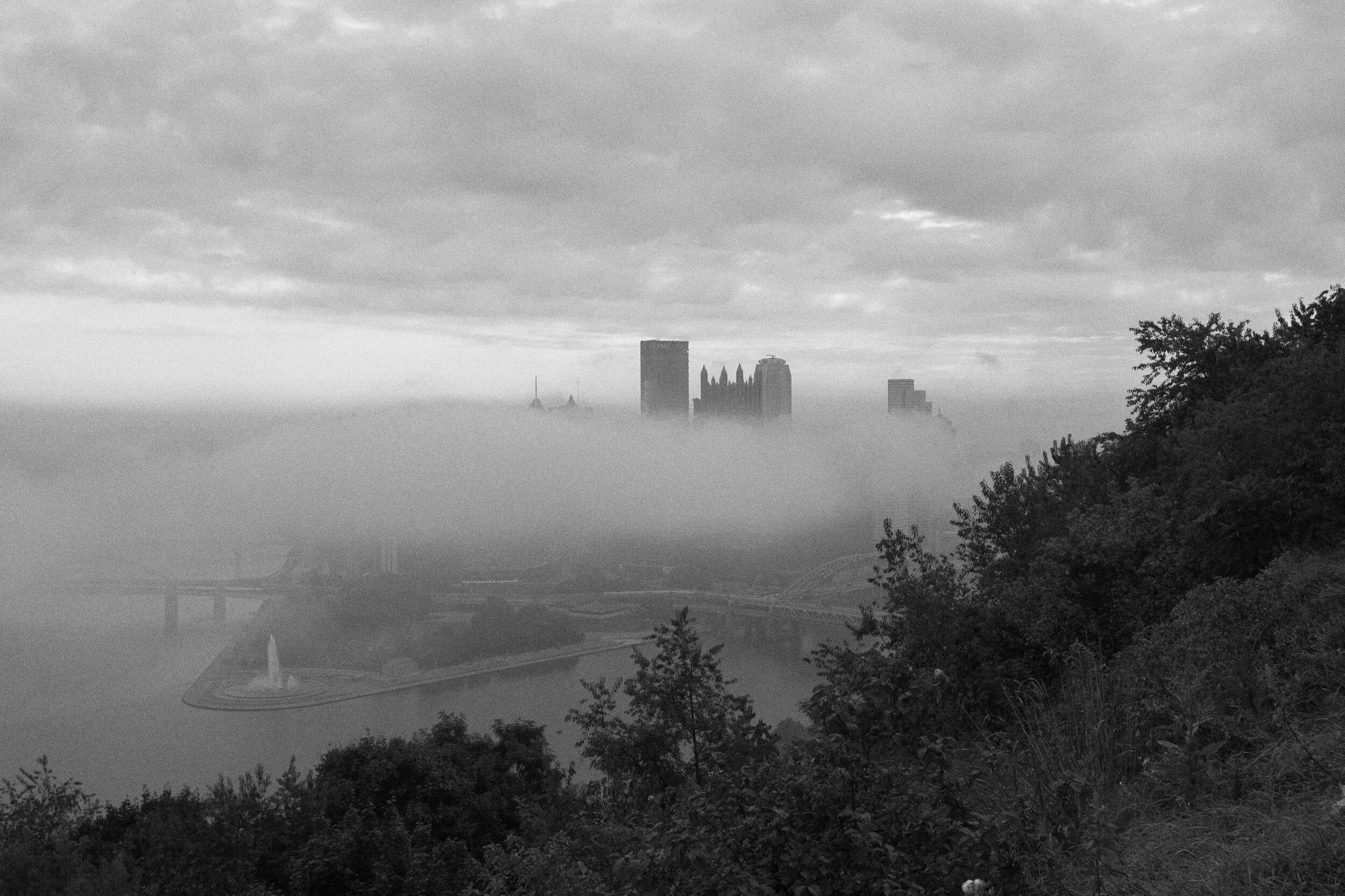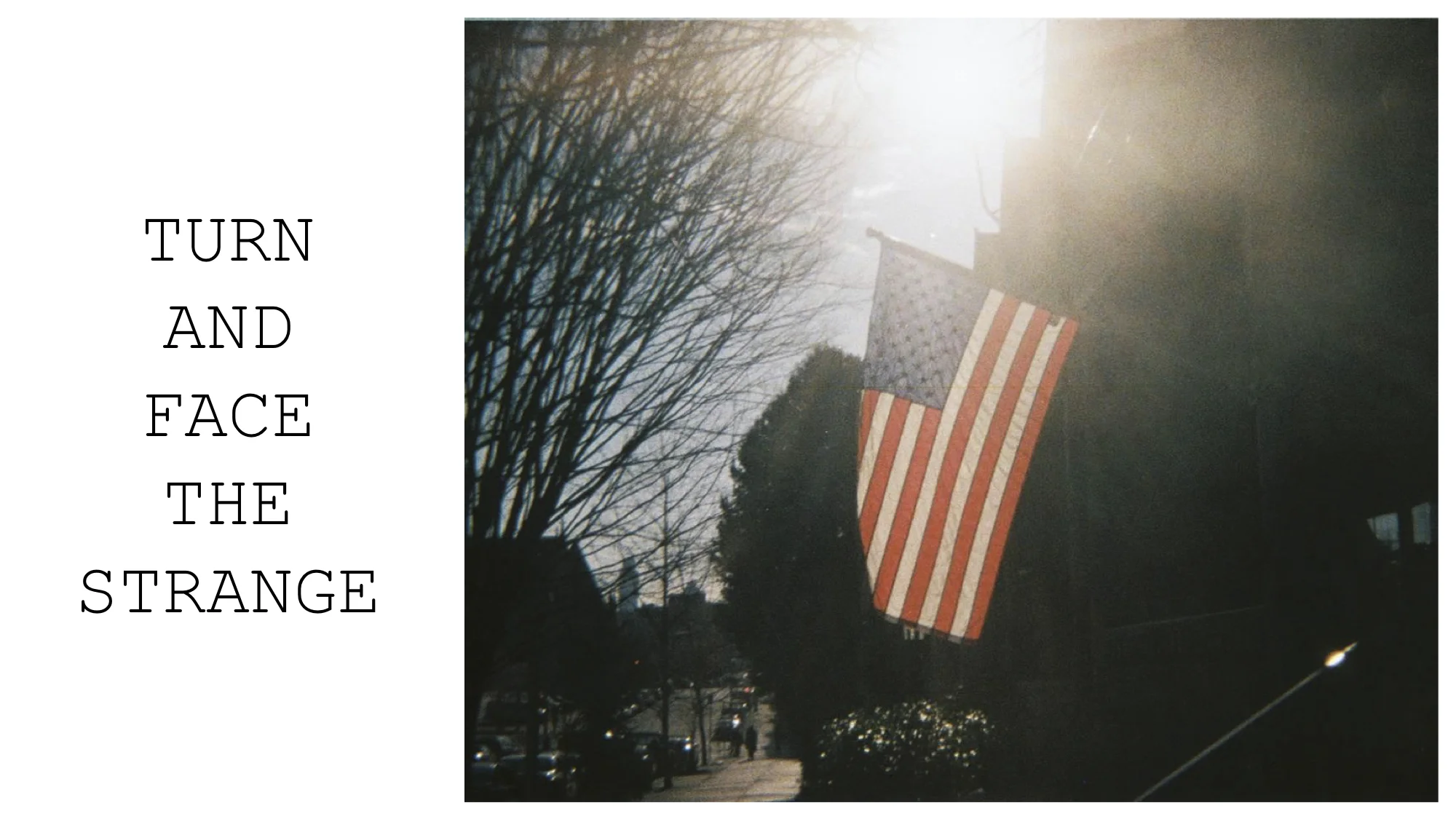Dan Bassini talks to Will Hopkins about his latest book, Cruel Summer.
Read Morezine
Noir Myths: Erin Cross
Noir Myths: Erin Cross
PC: Erin Cross
Andrew D. McClees (ADM): For those not familiar with you, or your work, would you mind introducing yourself?
Erin Cross (EC): Hello, I’m Erin Cross. I am based in Tokyo, Japan. I’ve been into black and white photography for seven years now - [ED Note - you can read more about Erin’s 7 year BNW career in her own words HERE]
Formerly, I also founded MONØMANIA, the first black and white photography festival in Asia, which later turned out to be a platform.
Beginning this year, though, I decided to focus on my personal projects, specifically self-publishing photozines and (hopefully later on) photobooks.
ADM: Was there a particular personal turning point that prompted you to pursue more of your own personal projects, beyond the festival?
EC: Since I came to Japan three years ago, producing content for MONØMANIA (as a platform) and managing it by myself became a challenge. I’ve tried many times, but there was always something lacking. I realized that I need to take things slower by focusing on my personal projects first, or else my ideas will never be executed at all.
ADM: What's the concept behind "Noir Myths" - I see that it's labeled #1 - Does the series have a particular focus? and What does "cold and gray" mean to you?
EC: NOIR MYTHS is a quarterly photozine that would include visual stories of my life in Japan.
The first volume, Cold and Gray, features a set of film pictures taken on a snowy winter day in Tokyo in 2018. In contrast, I chose to publish this photo story in the summertime because on the same year, I met the love of my life who turned coldness and grayness into the opposite. A short intro can be found on the photozine’s prologue.
I sense that the next volumes of NOIR MYTHS will evolve and evolve. I am not tying this series to just film photographs - although being shot in film is one of the reasons why I wanted to publish in tangible form. I rarely upload my film photographs, so having them compiled as a zine/book emphasizes their “analogue” nature: something which is quite hard to attain nowadays.
ADM: Throughout the zine you make really excellent use of textures to create atmosphere and feeling - from an outside perspective - what would you say inspired that approach?
EC: Thank you. A huge part of this approach was because of my workshop with D’Agata and Hura. During that workshop, I was asked to explain WHY I took such photos and I had to dig really deep into my emotions. So whenever I see shining asphalt or odd-shaped trees, for example, I take pictures of them because they make me feel something. I aim to translate those feelings through my photographs.
ADM: Zooming out a bit, what are your major influences both photographic and musical, for this project and your photography beyond Noir Myths?
Photography influences - I used to draw more inspiration from films back when I started photography. Alfred Hitchcock, Jim Jarmusch, Wong Kar Wai - are some of my all-time favorites.
EC: I “discovered” Japanese [are-bure-boke] style of photography much later on. Masahisa Fukase is probably my favorite Japanese photographer.
On the other hand, music is not the strongest influence in my photography. However, I appreciate the medium and would like to utilize it to magnify the emotions that one can get from “just looking” at photographs.
When using the element of sound, I prefer instrumental only. The lack of lyrics gives attention to the imageries, which to me, is a visual symphony.
Moreover, when my friend skinxbones made the soundtrack for Cold and Gray, I let him create it solely based from the photos in the volume. I plan on collaborating with other musicians, regardless of their genre, for the next NOIR MYTHS volumes with the same “non-instructional” instructions so each time would be a fresh experience.
ADM: What's your assembly and construction process like for your zines and books?
EC: I sequence the images manually. I print very small pictures and then arrange-rearrange them to my liking. I learned a lot about making photo stories during my intensive workshop with Antoine D’Agata and Sohrab Hura in Angkor Photo. That was five years ago, but I always think about the lessons I learned there when I make photo projects now.
ADM: Do you always shoot with an overall project or book in mind?
EC: Ideas always come to me. Though sometimes, some (or probably most) of them are short-lived.
For NOIR MYTHS, though, I’d like to keep my options open. As much as I love repetition in photography, I wouldn’t like this series to appear monotonous all throughout.
Recently, I started posting diptychs of my daily home-work-home routine. I use digital for this, which is great for instantaneous output. It’s also good practice for the eye. I might turn this series into a photozine as well, but nothing yet is set in stone.
One thing is for sure, though. There will always be hints of self-portraits in my works because it’s how I can relate through photography and other people, too.
ADM: What photos or spreads within the zine do you think are most essential to understanding it - you talk briefly about tying in self portraiture and it's importance - can you expound on that as well?
EC: The entire layout of Cold and Gray is essential to appreciating it. I intentionally put two images oppositely adjacent to each other, so that the viewer can look at both images in both directions. Even the cover page (English in front, Japanese on the back) tells the viewer that the photo story can be “read” from left to right (like most Japanese publications). More importantly, the photozine should be viewed along with its special soundtrack - which I had made specifically for it.
Ironically, I didn’t include a self-portrait in Cold and Gray, though there’s a picture of my feet dug in snow - if this counts as a self-portrait. Remember that quote from Lost in Translation when Charlotte said that taking pictures of one’s feet is just every girl’s phase in photography? Guess I’m stuck in that phase forever.
ADM: The "evolution" of Noir Myths or a long term project is familiar, but always fascinating to me. Do you know what you'll do next with it, or have a more specific idea of the next form it will take in the series?
EC: N°2 should come out in late November. It will be very different from Cold and Gray, in the sense that the film pictures won’t come from a single roll. I am collaborating with another musician, whose music I’ve recently discovered. And as for the the visual content, here’s a hint: Nature devours.
ADM: Getting into the music question - how do you fit music together with your photography, or what's your process for creating intertextual experiences between music and photos?
EC: Might have already answered this - But here’s an old photo series (as a slideshow) with music specifically made for it.
ADM: What advice would you give to someone aiming to do a regular zine - ie on a schedule like you're aiming to do your Noir Myths series on?
EC: For any photography project that requires religious updates, the only thing that you can trust or blame is yourself. You move at your own pace. You lag at your own pauses.
With NOIR MYTHS, I plan to release a new volume every time the season here in Japan changes. I think this allows me to come up with the next one without hurrying so much.
I also think that even the rise and fall of temperature influences my motivation a lot. I find it hard to progress in the summertime, but when it's cooler, I suddenly become unstoppable.
ADM: From Kyle J. Kohner: Outside of other photographers and photobooks, where do you find inspiration for your own photography?
EC: Aside from films, which I mentioned in #9, I also draw inspiration from all the daily scenes I encounter, which is probably why I like repetition in photography.
For instance, I pass by the same train stations to and from work, and to me, looking closer at the usual, ordinary things I see along the way allow me to see them differently.
I try to be inspired even if there's "nothing" to see. It's my own way of interpreting bits of my life here. A life less ordinary.
ADM: What question do you have for the next photographer? you can answer it yourself if you'd like.
EC: For the next photographer: If there is a single photo story that you can work on in your lifetime, what would that be and how would you create your images for it?
For me, I would love to work on a very intimate photo story of my family and I would like to do it for as long as I live. It sucks that we're all living in different places now and I only have a few portraits of my mom, dad, and siblings.
ADM: Thanks so much for doing the interview! Where can we see more of your work, and purchase a copy of NOIR MYTHS (both this issue and the upcoming one, when it becomes available)? Do you have any other parting words and advice?
EC: NOIR MYTHS is available through erincrxss.com and also on KungFu Camera, The Phooks, artbooksph, and soon on Unobtanium — to mention a few
Los Ojos De Muerte: Erwin Recinos
Los Ojos De Muerte: Erwin Recinos
PC: Erwin Recinos
Andrew D. McClees (ADM): For those not familiar with you or your work, could you introduce yourself and give a quick overview of your work?
Erwin Recinos (ER): My name is Erwin Recinos and I’m a photographer from the city of Los Angeles. For the last ten years my film photography work has revolved around my perspective of the city I live in. I also work with the website LATACO.com and that has also played a big role in my photography work. The film work I produce is a photo album of my life as a son, a father and photographer.
ADM: You've (as of starting this interview) just released "Exposed" which is a compilation of photos shot on Medium format film. What was the impetus to put together and release the zine?
PC: Erwin Recinos
ER: Actually this zine was produced back in 2018. With the Rona & quarantine it’s given me some time to promote my work. The thinking behind making this zine was opportunity to produce a zine for free. I was approached by some folks at Pow!Wow! Mural festival & PaperCutLounge to be apart of a zine release party for the week long event. I was given specs for printed zine and I produced my layouts. Looking at my catalog of photos I had there were produced that year with a Mamiya C330. I show you snippets of life that I capture in and around this vast metropolitan.
ADM: Oh, rad, I've noticed you have a really impressive, and high output of zines - or at least I swear in the last week or two you've promoted a couple other ones in addition to these two. You mention a bit later that you have different goals for different zines, but is there a connecting thread?
ER: The variety of work is the goal. To not have the work feel boxed in or stagnant with a genre or style. The work has to progress and move and grow as I will. My interest and goals are very different from when I started 20 years ago to 3 years ago.
PC: Erwin Recinos
ADM: You're also about to put out a collaborative zine with SER@LA? What's the zine about, and how did you decide to collaborate?
ER: Seratla and I have been collaborating for a number of years now. It was just a matter of time to put it in print form. The photos from this zine are dated back from his beginnings in 2012-2013. Seratla was paste & sticker campaign with a great logo and theme. I was privi to document his mural painting process. All photos were captured with a digital camera. Color was the only option for displaying and capturing his work. That was key through out the process. I would also create videos for some of the mural I documented.
PC: Erwin Recinos
ADM: Oh that's really interesting - did you learn anything new while making a zine for that campaign - also did you find the video-making process influenced the photos you took?
ER: That zine was a learning tool for a lot of projects that proceeded after it. It made me focus and work thru the process and not just rush thru another project. Learning more with printing and shooting and editing video. This in no way narrow my scope but enhance my awareness of slowing down the process and seeing everything thru the end.
PC: Erwin Recinos
PC: Erwin Recinos
ADM: From the base description both zines seem very different - Exposed being all black and white, where the collaborative zine is all color - that's a fairly big stretch in working styles - did you plan to put out two separate zines from the outset?
ER: Of course. Zines have a life of their own. They can be themed zines with volumes of printed editions. Zines can also be short lived bangers with the right paper and content. The work for both zines i made had time to breath from when they were first captured. As a creative you know when the work you are curating is ready to be presented.
Here is an example of my last two zines I produced last year. Both were the same in color but totally different content. One was about graffiti and the other about wrestling. The decision of the color and execution were already decided. Riso printed was the way to go. I talked with Cynthia Navarro of Tiny Splendor in Echo Park, Ca. She gave tips and helped make suggestions on the final printed zines.
PC: Erwin Recinos
ADM: Riso is really awesome stuff - and the previews of that wrestling zine look really great on your website - how did you get into that project - and more generally how do you find your journalism work with LATACO and otherwise contributes to your photography or informs it?
ER: The zine is titled One year of Bar Wrestling and it was my perspective of this niche wrestling scene that popped up in Baldwin Park, California just 16 miles east of downtown LA. A friend of mine, Dennis bought me a ticket to check it out. That started late 2017 and is still going. Attended a show just before the quarantine in March. As everything is theses days it hit social media and nuked the fridge with a spot on Macaulay Culkin when he appeared on Ellen. Great move for them. I'm just glad I was there when I could see it happen or at least take fruit.
All photos were taken with various point n' shoots. Hard to hold an SLR or DSLR with a beer in hand and craziness going around. It made the experiencing of capturing it more fun with a up close and personal feel in the photos.
In 2010 I started with LATACO as an event photographer and documenting my perspective of Los Angeles. From art shows, graffiti, pop-up events and various music concerts. The scene in front of my camera always transitioned that it helped me grow as a photographer. In the last two years LATACO has taken on a role of trusted local grass roots news organization. The eye of documentarian is now the next evolution and it is shifting my work. Another style that is evolving and it’s great to see.
*Here is my author’s page on the website if you'd like to see the work I've done in the last 10 years.
PC: Erwin Recinos
ADM: You're a dyed in the wool Angeleno - what do you look for when you're out in the city shooting, if you wouldn't mind extrapolating?
ER: If on assignment for the TACO I have time, place and photo goals that need to be executed. Also, my interest of local sports, art and events with family will take me anywhere in the city. A camera is always with me so my everyday life living in this city is what I believe I'm really capturing.
ADM: In terms of getting out into a city or a culture - like you do with Los Angeles, or working with LA TACO, or getting into Bar Wrestling - what advice would you give to someone looking to capture that or something like that - both as a personal project and a professional one?
ER: Access, work ethic and luck are really the foundations I use when working on personal & professional projects. Knowing the right people and networking to me is still a thing which gives me access to create personal projects or events to get that professional gig. I believe I've put in the work and met enough of the right people to keep growing as a photographer and a person.
PC: Erwin Recinos
ADM: From Adrian Otero Vila: If you could go back in time and stand next to a photographer when they were making an image, which one would it be?
ER: There are three photographers I'd like to do this with: Mike Miller and his famed photo of Tupac Shakur. Jonathan Mannion and his photo of Notorious BIG when he released his first album. Estevan Oriol and his photo of Dennis Hopper.
ADM: What's one question you have for the next photographer? You can answer it yourself if you'd like.
ER: What is the most important aspect of photography that you have applied to your daily life?
ADM: Where can we find your work and purchase your zines? Any other parting words?
ER: My printed zine work is available via losojos.bigcartel.com. Support people who support you. Your local zine community will thank you.
SMALL ABYSS: Chris San Nicolas
SMALL ABYSS: Chris San Nicolas
PC: Chris San Nicolas
Andrew D. McClees (ADM): For those who aren't familiar with you or your work, can you introduce yourself and give an overview?
Chris San Nicolas (CSN): Hello, I'm Chris. I'm 26 years old, I live in Long Beach, CA, and I've been practicing photography for about 4 years. I started off bringing disposable cameras on trips and eventually grabbed my own 35mm camera, and it's been a steady and constant progression since then. I shoot a mix of street photography, landscape, and occasionally portraits. I don't shoot with an end goal or a specific photo in mind, I take photos as I go about living my life. I see all of the work as autobiographical in nature - with an overarching desire to represent life honestly, as I see it.
ADM: What was the impetus to put together and publish Small Abyss - also will it be a series - there is a "1" on the spine? A bit of an aside - I thought it was really cool how you used the frame marker 1 for that.
PC: Chris San Nicolas
CSN: I made a small zine a year into my start with photography and wanted to make another that was more representative of the work I've been making the past 3 years. Since it spanned a longer period of time and I wanted it to be more complex - physically and conceptually - I decided on a small book. In actuality I've been wanting to make a book for a long time, but around November of 2019 I finally thought up a concept that I believed served as an appropriate and interesting vehicle for this period of work.
I don't intend Small Abyss itself to be a series, but the next book/large zine project will have a frame marker for 2 on it - so more of a numbering system for main projects. Thanks, I'd be lying if I said that I didn't partially get the idea from the cover of that Forte Collab Zine you curated a while back.
ADM: I know that the project, while definitely focused, and the photos are well chosen for it - is compiled from photos taken over the last three years - what was the selection process like? Did you find yourself taking more from a specific time period, or end up using more recent photos over older ones?
PC: Chris San Nicolas
CSN: The project developed backwards in a way, with the title coming first and being the impetus for the whole project. I knew I wanted to make a large-ish cumulative project but a subject or theme didn't jump out at me just by looking through my photo archives, nor did a project based on one subject or type of photograph particularly interest me. When I was taking the first steps into the project (still unnamed) I was thinking a lot about how individuals perceive reality - how no one's personal experience can perfectly match up with another's, even if they experience the same events. That thought thread led to the title Small Abyss which (though it has many meanings) is a rebuttal to the line "No man is an island" from John Donne's Devotions Upon Emergent Occassions.
I let those competing ideas inform my selections as I looked through all the b&w work I've made since 2016. Since the theme was an exploration of an idea rather than a physical object or space or specific story, I was able to be creative in what photos I chose. I also wanted the interplay between the photos to be an integral part of the project, so I (painstakingly) cut a few of my favorite photographs I've made from the project because it didn't fit the theme or fit well with the photos in the project that did. I ended up choosing more recent photos than older but that's mostly because I took more pictures in 2019 than any other year. I printed ~200 photos in 4"x6" and taped them to my wall and let the layout create itself in a way. I knew I wanted the majority of the spreads to have one photo on the left and one on the right and function as pairs - one of the ways the photos interplay with each other. I also realized halfway through that I wanted there to be a progression that made sense with how the project exists as a book (which made me go back and change a lot of the pairings). I used this framework to guide the actual layout. It was a really iterative and organic process and though it was really fun, it was also frustrating and took a long time.
PC: Chris San Nicolas
ADM: In response to how you Assembled the zine: Did you hand print all the 4x6 prints? Also how did you come up with that process of putting the photos on the wall, and constructing your pairs from there - and how do you think that shaped your process rather than doing the process via sorting on a computer, or straight into a layout program?
CSN: No I used CVS for convenience and cost. I wasn't concerned with quality for these prints because they were more an intermediate form of the project. I've always been a fan of tactile processes, so I'm not sure that I can pinpoint a moment where I thought of using a wall. I think it's always made sense and been an aspiration for as long as I wanted to make a book of photographs. The final product was majorly influenced by this process. I had this birds-eye view of the whole project where every loose connection or interesting interplay would draw my eye like the movements of small critters in a large grassy field. When I saw these connections, I could immediately move the photos next to each other, replace one of them with another that works but in a different way, compare them to other pairings and so on with a speed and physicality that I don't know how to reproduce with a digital process. Screens are only so big and there's a trade-off between scope (how many elements you can see at at once) and detail (how clearly you can see each element) which are largely eliminated if you have a wall, prints, and mobility. Maybe I don't know how to use digital tools effectively enough, but I can never experiment as quickly on a computer with the mixing and matching described above and I had the added benefit of seeing the physicality of the photographs. With the goal being a book, this was invaluable. A lot of these frames I had only seen as scans on a screen and I was surprised by how many photographs that I had enjoyed initially, did not hold up when printed.
PC: Chris San Nicolas
ADM: The book contains a fairly intricate balance of landscapes (vernacular and traditional) with intimate portraits, and candid glimpses into other lives - how did you strike this balance this, and is there a particular significance to it?
CSN: As I mentioned before, an overarching goal for my photography is to represent life genuinely and I wanted this project to embody all the varied experiences in life. I used the balance of all of these kinds of photos as a way to do that. To reinforce this, I jumped around in scale a lot, for example going immediately from a close up of something tiny to a large sweeping landscape. And though the project doesn't stick to a single type of photo, there's a lot of repetition but also contrast in motifs throughout. A lot of the spreads present two similar things in different ways or two very different things in similar ways - like some kind of oxymoron. This ordered chaos is how I see life and I hope that feeling comes across.
PC: Chris San Nicolas
ADM: Was there a particular moment or photo, or even pair of photos - that the overall concept "clicked" into focus for you?
CSN: It wasn't with the photos that the concept clicked. There were two breakthrough points for me. The first was when I wrote the first draft of the poem (or 3 poems depending on how you look at it) in the beginning of the book. I had even used the phrase "No man is an island" in that first draft, which was taken out later.
The second breakthrough was when I was deciding on the overall structure of the book. Initially I wanted the book to be able to be read left to right (normally) as well as outside-in, where you'd start with the inside covers and turn a page on each side in until you reached the middle spread. The idea was for these outside-in "spreads" would work as mirrors or opposites of each other. The main gripe I had was that people don't read books like that and if I'm doing something that weird, it has to reinforce or add to the concept in a meaningful way. I scrapped the idea and played around with a few more related ideas until deciding on one. The final layout has a sense of progression that works with the experience of reading a book and how the photos are presented.
ADM: Going back to the zine being a focused anthology, what would you say your key influences were for it - photographic, or otherwise?
CSN: Presentation-wise, I took a lot of cues from Japanese photography from the 60's and 70's. A Hunter by Daido Moriyama and the Asahi Camera publications come to mind. Both often featured full bleeds on their two page spreads as well as their multi-photo spreads. Another influence was Rap/Hip-Hop which I have only recently started exploring. I've always enjoyed wordplay and turns of phrase. I especially like when someone pivots, talking about a whole new topic based on a double meaning of a single word from the previous line. I wanted the progression of photographs in the book to feel like a series of pivots or turns in phrase maybe even audio samples taken from diverse sources but meshed into the narrative I was trying to create.
PC: Chris San Nicolas
ADM: In terms of takeaway, what did you notice about your work, and by extension, about how you and your vision changed over the three year period?
CSN: The biggest takeaway I had was realizing how much of my work had been guided by my subconscious, the same subconscious that attached to the concept of Small Abyss Vs No Man Is An Island. I feel like this idea has always been in the back of my head and after these 3ish years of it quietly guiding my intuition as I made photographs, it finally bubbled to the surface and I had enough work to express it in a satisfactory way. But now that the cat's out of the bag, it's something I feel like I'll always be conscious of and because of that I'm not sure if I'll keep making work like this going forward. This project feels like a bookend, at least for the last few months it has. I haven't been shooting nearly as much once I started making the book and I think it's because I want to tackle a different problem with a different artistic language or medium. I'd say the biggest realization is that I was always working towards something like this and now, at least until I'm no longer burned out on this work, it's time for something new.
ADM: Now that you've wrapped up Small Abyss, what can we look forward to in the future?
CSN: I honestly couldn't say. I'm still taking pictures, just not as frenzied as before. Definitely more photography, probably less exclusive b&w 35mm film work. The project has definitely made me want to do more physical projects. Now that I have the large overarching project done, I've given myself permission, I guess, to do smaller, more niche projects possibly with a more mixed media approach.
ADM: Would you say after this project your working process has changed? if so how, if not why not?
CSN: I'd say it has definitely slowed down. I've been putting a lot of energy into finishing the book and have been shooting less. I hope I'll eventually get back into a groove where I'm shooting at least a roll a week. I think I'll have to start making smaller projects with goals in mind or define more explicit long term projects instead of idly shooting.
ADM: What advice would you give for someone looking to put together a retrospective of their work, especially one covering as much material as yours does?
CSN: Have a concept or theme that you can dig into and also have enough work to fulfill it. Make sure to overview all your work, there might be stuff you forgot about that will work really well. Keep asking yourself questions and don't get married to any one idea.
ADM: Do you have any parting words? Also where can we pick up copies of Small Abyss and see more of your work - I know you do print on demand - both darkroom and inkjet.
CSN: Just stay safe and sane and healthy. Small Abyss will be available on my website www.chrisnicpics.com or through DM via ig at @chrisnicpics. You can also see my work on my website and ig. I do, I'm still figuring it out more consistent print sales but if you follow me on either platform, I'll let you all know on there. Thanks again for doing this interview with me and promoting the project, Andrew. Really appreciate all the stuff you do for the community!
Hi! If you’ve read this far: Thank you! We hope you’ve enjoyed this interview! if you enjoy content like this, please consider subscribing to our Patreon!
SURE: Daniel Wang
SURE: Daniel Wang
PC: Daniel Wang
Andrew D. McClees (ADM): For those who aren't familiar, could you introduce yourself and your work, photographic or otherwise?
Daniel Wang (DW): Hi. My name is Daniel Wang and I am based out of Toronto, Ontario. I developed a fond interest in photography 3 years ago when I was introduced to skateboarding by the wonderful community I was surrounded by. How I thought about and viewed architecture and other physical aspects of a city were completely changed when I dove deeper into the the craft and mindset. My enthusiasm in street photography and photography as an art form was sparked through the exploration of my environments evoked by skateboarding and when my roommate introduced me to film photography and the history of art. Since then, I have worked professionally in event photography and started attending Ryerson University to further my understanding of the medium as a tool for creative expression. Currently available works include, my first photo zine "sure" and a selection of film photographs in my visual diary on instagram @danxuwang.
PC: Daniel Wang
ADM: "Sure" looks like it's a zine about a trip or travel - was there a specific trip it was from? - what's the story behind it, and where does the title come from?
DW: "sure" is a photo zine of a 40 hour trip I took to New York City on the last weekend of my reading week for school. I used a roll of Fuji Pro 400H and Kodak Portra 400, with my Canon Sureshot 70 zoom, developed and scanned at the local camera store. Many notable photographers of New York have inspired the run and gun and silent observer styles of photography present in the zine. On the creation of the title, who really knows. I could have been really stoned with my roommate and saw the "sure" in canon sureshot and called it a day, or it could mean something more. Something to do with the definition of "sure" as a definite affirmation and how the word is ironically perceived today as a "duh" or "whatever". Nevertheless, nothing is more ensuring then documenting a captured image and as a mantra, I can't help but say sure to an exhausting and mind stimulating 40 hour trip in New York.
PC: Daniel Wang
ADM: You use a lot of color blocking and color on your background (which I find really neat) - is there a significance to those color blocks, or is it an alternative to white to augment the images?
DW: I feel like there is a significance to the colour blocking. The editor and I really thought about the physicality and rhythm of the book and completed it overnight, we were very inspired. How the book felt to read through was most important. The tapered colour pages and coloured spreads provoke and primes the reader from every angle before even opening the book. The colours in the backgrounds are equally as important as the photos presented on the spread. We really tried colours until our intuition told us to stop. Inspiration came from colour palettes we'd see in the photos and our everyday life, from the t-shirts hanging in chinatown to our random assortments of gathered knickknacks. How did you find the coloured spreads and taper pages, Andrew? Do you have a favourite page and why?
PC: Daniel Wang
ADM: I quite liked them! I found that as a photograph Page 10 (or the 10th Spread — Pictured here directly above) is my favorite -- but that's very much a personal appeal - I really like centerfold images on a spread, especially used in a landscape/survey style -- as far as overall spreads 15 and 19 were my favorite layouts or sets of multiple images together, both for the image choice and the intersection of the images. Tying into the above - the zine seems to be chronologically ordered - what was the sequencing and selection process like for "sure?"
DW: I am glad the zine seems to be chronologically ordered, but it was definitely not! Again, we really just relied on intuition and instinct and wanted to experiment with something different then what we were accustomed too. Each spread was made with specific themes in mind, whether we wanted to completely highlight an image or add colour and shapes to the viewing space to augment the image. Putting it together was just seeing what felt right where. I would say these weren't my best photos of New York but they made the most sense for me to put together for this zine. The catalyst for the zine derives from thinking about how important the presentation or delivery of something can be, compared to the thing itself. Along with all the physical aspects of print and book making, creating this zine has opened a new channel for me to express my ideas.
PC: Daniel Wang
ADM: You mention working with an editor rather than strictly self-editing the zine - I think this is a great idea - who was the editor and what was the process like working with an editor outside yourself?
DW: As much as I love the idea of independently produced products I believe my collaboration with my editor, roommate and good friend Kolwyn McKinstry was an important element to developing and fine tuning my creative ideas. The hardest part is finding the right people you can confide in and share a creative vision with. Once I started talking more personally about expression, photography zines and colour, the discourse between Kolwyn and I became very valuable towards how our work process developed. Having another person to share my ideas with, helped me formulate and create this with much more confidence. He kept me stoked !!
ADM: I really like the thematic togetherness of the book - was there a specific moment or impetus where it clicked to step away from the confines of strictly ordering things chronologically as many zines are want to do?
PC: Daniel Wang
DW: Again, I appreciate that dearly. TBH, I had originally planned for the zine to be chronological but with our emphasis on how the book feels to read, we preferred the rhythm of the order we had chosen. It is hard to say if there was a specific moment or impetus, but it is a smoother read this way.
ADM: It's really cool to hear that this has opened up a new venue to express yourself - are you planning more zines?
DW: I am planning more zines! Going through this process has made me realize how much I love doing it, it is an interesting medium and I plan to experiment more with my editor and any willing collaborators for future zines.
ADM: Where can we pick up copies of Sure? and see more of your work?
DW: Sure can be picked up on my website www.danxuwang.com or by DMing me on instagram @danxuwang. I plan on releasing prints and more zines. It is currently a 1 man operation, but I will do my best to ship it in a timely manner !!
Hi thanks for giving this interview a read - to help support the hosting of the website please consider becoming a patron via the link below!
Landscapes of Nostalgia, and Beyond: Karl Bailey
Landscapes of Nostalgia, and beyond: Karl Bailey on nostalgia, travel, and the zine.
PC: Karl Bailey (@Karlbailey)
Andrew D. McClees (ADM): Hi Karl, thanks for doing this interview. For those who aren't familiar with you and your work can you please introduce yourself, and describe your work a little bit?
Karl Bailey (KB): Hi, my name’s Karl Bailey, I'm 28 and live in Portsmouth which is a sea city on the south coast of the UK.
A lot of my work is about looking backwards. Many of the locations I've shot at have been inspired by or even from, my own childhood. I'm also keen to preserve and document history and the many changes that we observe over our lifetimes. Ultimately I wouldn't say I aim to have a specific style of work or shoot with a style in mind but I'm always told my work evokes nostalgia.
ADM: I'm curious, when did you pick up photography? Mining a little deeper in, do you think it's linked to your focus on nostalgia? and following that up, what specifically about nostalgia do you find so compelling, both individually, and culturally?
KB: My dad took a lot of photos and video and even had his own darkroom at one point, I was always carrying a little point and shoot on family outings, so I think that's how it was picked up/passed on. I got really into it when I was about 15 and studied Media and Photography in college where I got to use the darkroom and shoot video. From that point on I was part of a local video group that made an amateur sci-fi series for small local TV channels, Then I started picking up photo and video work professionally and ended up shooting all sorts, weddings, corporate, promotional etc but it burned me out and I didn't touch a camera for years. When I finally did in 2018 I realised it was the natural thing that was missing from my life. There is definitely a link somewhere down the line, I love the idea of archiving and not letting any part of history slip away, for no one to remember it; the thought that something or someplace has created so many memories for people and could be knocked down with little thought makes me quite sad even if I'm not personally connected.
PC: Karl Bailey (@KarlBailey)
ADM: What got you into the zine or photobook format?
KB: I love creating and making things, this stemmed from a diy record label I owned with my friend about 10 years ago. We would release music on CD's, Tapes and Vinyl and I was always pushing myself to create interesting and appealing packaging. It just feels natural to carry on that physical aspect in what I do now. Having something to hold and enjoy is really important even more so for photography, printed work is so much better than looking at it on a screen.
ADM: What does a typical shoot day look like for you?
KB: Some days I will carry one camera, and others I will end up carrying too much. Ultimately it's about exploring new places or turning down roads I've never been down before and seeing what will crop up, usually I will walk miles on end as this is the best way to explore. I always carry a camera on me wherever I am so technically everyday could be a shoot day!
PC: Karl Bailey (@karlbailey)
ADM: How do you conceptualize your projects, and what's your selection process like?
KB: I've yet to shoot with a project in mind, although this is something I have started exploring just this month. A lot of my projects (then zines) are born from a moment in time that I've been shooting in. Themes and ideas usually come to me once I have the photos and I can tie them in that way. The selection process goes from contact sheets, narrowed down to printed A6 photos and then I lay them out or pin them up, I'll leave them for weeks and slowly look at them every now and then, make notes and finally pick the ones for a project/book... assembly I'll try to find connecting themes and elements depending on how I lay out the book initially.
ADM: Having read All of a Sudden I Miss Everyone, and also having seen work from Greece and End of Summer on your Instagram, it seems like a lot of your work has to do with both travel, resort towns, and decay. What about those subjects do you find so compelling, or what drives you to make projects with those themes?
KB: To most people these things are just ignored, they see the beauty in the shiniest and newest things and not the character that I see when taking these photos, Again it comes down to history and not wanting these things to just be gone one day and for no one to care or see them. Greece was a nostalgia piece for me, I went there as a child and I remembered so much of what it was once and instantly felt the need to document the remnants that were left.
ADM: I know you were living/working in China recently -- do you have an upcoming project with work from there?
KB: This has been my biggest project to date, sifting through 1300 photos to try and get a reasonable number of photos for a project was extremely challenging and daunting.
PC: Karl Bailey (@Karlbailey)
I currently have 300 A6 photos that I will start laying out for the book and I'll probably end up cutting back at the same time. The project will be one-half of China photos and the other half Hong Kong photos, the China half will be titled 'I don't know why the caged bird sings' which is a social commentary piece on the joy and happiness that I experienced from the populace, despite them living a somewhat oppressed lifestyle under the rule of communism without even really knowing about it. The book will be appearing on Kickstarter in the first quarter of the year and I will be holding a gallery show in my hometown in August.
ADM: Off the some of your other responses you've given, you found your hypothesis for the book after going out and shooting and documenting a lot. Can you speak on what some of the big moments or images you captured were that led you to focus your book on The Joy of the people of Hong Kong and China despite the oppressive nature of their government?
PC: Karl Bailey (@Karlbailey)
KB: Living in China was such an eye-opener, I strived to understand and talk to as many people as possible about history, culture, family life, politics and the future, I think at the end of it and having experienced some of the more dangerous sides of China It was an almost natural conclusion. Walking around the apartment complexes, going to the food markets and living in the poorer area of the city gave me a real glimpse at the people, sometimes they would come and talk to me, or sometimes we would just communicate solely with body language but most experiences I had were that people seemed happier, more open, more willing to help... it was a lot different to living in England where everyone is so cagey and polite. For Hong Kong it's very different, the city is naturally a mix match of cultures (British/Chinese) and it's totally and utterly unique because of that, it's an amazing and beautiful city with photographic moments to be had around every corner.
PC: Karl Bailey (@karlbailey)
AM: For those considering getting into photography -- film or otherwise -- what would advice would you give? Also, for those who might be interested in making a zine, but don't know where to start, do you have any tips?
KB: Just go out and do it! Visit galleries, buy books, find photographers you enjoy, expand your knowledge... don't get hung up on buying gear, don't get hung up on Instagram likes/follows... more importantly, just have fun and use it as a creative outlet... something I think has been somewhat lost in this modern generation. I think understanding design/layout is really important, study from the greats, find your subject or theme for your book, be critical and ask for opinions. Be somewhat sure of yourself and your work, make a zine worthy of owning and not just for the sake of making a zine.
AM: Have you found any particular photobooks or photographers that have strongly influenced your work? If so, who, and can you talk a little bit about why, and what books or work of theirs you'd recommend?
PC: Karl Bailey (@karlbailey)
KB: So many photographers, I'm always excited to see old or new work and I love collecting books...
Modern Color by Herzog stood out to me a lot this year which I think is apparent in my 'End of Summer' zine I've also been enjoying books by McCullin, Parr, Laura Wilsons 'That Day' and the Magnum Contact Sheets book. I can't stress how valuable these are to a photographer!
AM: Those are great recommendations. Thanks again for doing this interview! Where can people find and buy your work, either your zines or your prints right now? Do you have any other parting words ? Can we expect you back to talk about "I don't know why the caged bird sings" when it's closer to completion?
KB: www.karlbailey.co.uk for all zines, occasional prints but I tend to put them up as one offs on IG stories (@karlbailey). Thanks for having me on to do this, it's been really fun! I would love to come back when the time comes!
Together, We Wither Away and Know Worries: Dylan Rozzelle
Together, We Wither Away and Know Worries:
Dylan Rozzelle (@objectsofridicule)
PC: Dylan Rozzelle (@objectsofridicule)
Andrew D. McClees (ADM): So, for the readers, Can you introduce yourself, and give a quick overview of your photowork? (beyond the examples we've incorporated here?)
Dylan Rozzelle (DR): I currently live and work out of Richmond, Virginia. My work is entirely based on life as it’s happening around me. I can’t say I’ve ever set out to hone a particular style, I just enjoy documenting things in an unadulterated way. The process of shooting has just become ingrained into my lifestyle. After learning how a camera works, everything else just sort of fell into place for me. Humanity creates my images, I just have to focus and press the button.
ADM: I remember from having talked with you before, your instagram handle "@objectsofridicule" is actually the name of an overall project, is it more your zinemaking/bookmaking output, or your overall body of work? also what's the story behind the Name, and how does it interplay with the work you select for it?
PC: Dylan Rozzelle
DR: It’s more or less a moniker that just ended up just sticking with me. I like making things for friends and people with similar interests as myself. Photo zines, poetry, pins, patches, anything I was creating and giving out in numbers really, I just started stamping with the name. It was never meant to be taken too seriously, and still isn’t. I’m not trying to create a brand in anyway, it’s just something that’s become an ongoing project -- one that as of recently has shifted away from my own work and moved towards others as well. I have a love/hate relationship with the name, but I think that’s inevitable with anything you’ve submerged yourself into for multiple years, and grown older with.
ADM: From the zines I've read of yours, a lot of your work seems to be done while traveling rather than in any given/set location -- is there a primary reason for that, and what is it specifically that draws you to travel, and how has it influenced your work?
PC: Dylan Rozzelle (@objectsofridicule)
DR: It’s not planned that way specifically. I carry a camera on me at all times, so anywhere I happen to be, I’m taking pictures. Last year a lot of time was spent meandering different countries, so the zines just happened to follow the experiences. When traveling alone, I shoot a lot more, but the focus tends to turn more towards the streets. Being alone and in new places, I find myself less distracted than any other time I’m out shooting, mainly because the only comfort I have is in holding a camera. It’s easy to romanticize new places, though, and shooting daily life is just as important to me.
If you’ve ever gone to a local library and looked through the photo archives of where you’re living, it will teach you not to take for granted what you see on a routine basis. Every city is consistently under construction and will be vastly different decades from now. The hand painted ads, cars, clothing, those things that gives older photographs their charm just happened to be the way life was existing then. There’s no true proof of the past other than the photos that were taken. Time has made mediocre photographs much stronger now than they were when the shutter first opened. Everyone that is documenting the places they have lived will have much more compelling content 40 years from now. The factory your father worked in as a teenager is now a tacky condominium and the record store you used to catch punk shows at is now an Urban Outfitters. You can’t get those stories from street photography in foriegn places. I try to find a balance between the two, because I see the value in both.
PC: Dylan Rozzelle (@objectsofridicule)
AM: Got it. I take it we/I/your audience in general can look forward to at least one, if not more Richmond based zines in the near future? The nod to documenting your life as part of history is interesting -- did you grow up in Richmond?
DR: I have a few things in the works, absolutely. In July I put out a zine titled Together, We Wither Away which is comprised of images from the east coast, with a large focus on Richmond. In the brief period between getting back from overseas to releasing that zine, I had gone home (a town called Norfolk about 100 miles south of Richmond) twice -- both of which were for funerals of people who played valuable roles in my life. As soon as I got back from the second funeral, I formatted that zine and then put it into print. It was an attempt to make a statement against detrimental lifestyles and self-harm, as well as a way to help cope with my grief after their deaths.
Since then I started putting my efforts into a project called Know Worries. They are 4-way collaborative anti-profit zines. Once I curate and publish them, each artist receives 25 copies to do what they will, other than to make money. Know Worries II was released last week.
AM: Your portfolio is entirely black and white, and it has a pretty distinctive edge to it -- how did you settle on it? what were some of your influences for your look?
DR: I shot strictly color through cheap cameras for years. I was soaking films in any chemical I could think of to get bizarre color shifts, and completely destroying emulsions, cross processing as well, just to see what would happen. I didn’t care, I just liked to shoot and experiment. I ended up becoming good friends with a guy who was vastly more knowledgeable than I about photography. He helped guide me towards better cameras and glass, showed me books by the greats and it shifted my focus. That’s when I began to start taking it a little more serious. I switched to black and white because we were processing the film ourselves in my apartment. In turn, the cheaper it is to get images, the more careless and often you can shoot. Good photos are subjective and completely by chance in my experience. The more you shoot, the more chances you have of getting something you’ll be happy with. We ended up living together and turned my bedroom into a darkroom. Fully submerging ourselves into the process. I learned a lot during those times and it helped shape my style for sure. I attribute a lot of where I am today to him. Shout outs to Josie.
PC: Dylan Rozzelle (@objectsofridicule)
I’ve tried shooting color since then, but I just feel like it doesn't carry the same weight and feeling for my own images. I don’t look for colors, I rarely even think about them -- but maybe I’m just too far gone in that thought process. I’m sure it doesn't help that 95% of the books that I buy are black and white. I don't think one is better than the other, I just think it happens to work better for me personally.
Most of the photographers I admire were living and working sometime between the 1970s and the 1990s. Having not lived my youth through those eras and being attracted to the subcultures that sprug during those decades, I’m fortunate for the ones who decided to pick up a camera and were shooting back then. In current times, color point and shoot photography is one of my favorite styles to admire because I know the importance it holds for the future. It plays a large influence in my work even if I’m not doing it. There is nothing about it not to love, and anyone who knocks it is just trying to put themselves on a pedestal. That purist mentality is what ruins art forms and discourages people from getting into it rad stuff -- no matter what scene you’re in, I feel that it almost never does any good. I encourage anyone I meet that shows the slightest interest in photography to buy and a point and shoot with decent glass and just blow through frames to get started. Whether you enjoy color, or black and white, who gives a shit. I think it’s all irrelevant if you’re having fun and it’s going to leave future generations more content to be enamored by. If you don't want to learn the technical side of things, I don't think you should have to. Elitist culture is pathetic. Getting pictures is the point of what we do, right?
PC: Dylan Rozzelle (@objectsofridicule)
ADM: Agreed! That’s really rad -- and a smart suggestion for people thinking about getting into photography, or film photography specifically. Elitist culture makes it really difficult to just get new folks into whatever they’re gatekeeping -- usually to their own detriment. Could you share a few of the books and photographers that you’d admire, and recommend to someone just getting started, that’s been out shooting a fair bit but hasn’t really immersed themselves in the history of photography beyond say instagram (not that there’s anything wrong with that)?
DR: I think it’s important to find out what kind of photography resonates with someone before recommending them too much. I love to read, but I could give a shit less about James Joyce. When it comes to photo books, there’s no shortage of inspiration to be found. The feeling you get flipping through an artist’s book is something the internet cannot give you. The problem with instagram is that it’s far too much content to digest. It’s almost impossible to connect with a viewer, and hold their attention before it’s all lost to the movement of a thumb. Pretty fucking tragic, really. I always recommend going to used bookstores and the library, there’s always new things to be found, plus there’s no need for money if you don’t have it. You will always, without fail, end up inspired to create more compelling work and theorize ideas for new direction in your photographs.
A brief list of people who have personally inspired me:
Tish Murtha, Ray Metzker, Gusmano Cesaretti, Richard Sadler, Andre Kertész, Mary Ellen Mark, Jill Freedman, Richard Kevlar, Helen Levitt, Eikoh Hosoe, Bruce Davidson, Gary Winnogrand, Ralph Gibson, Joseph Koudelka, Lee Friedlander, Ari Marcopulos, Saul Leiter, Julia Gorton, Eugene Richards, Larisa Dryansky, Bill Brandt, Ed Templeton, Ed van der Elsken, Peter Hujar, Nan Goldin, Ken Schles, Robert Frank, Larry Towell, Boogie, Mark Cohen, Jun Abe, Anders Petersen, Mike Brodie, Donna Ferrato, Sylvia Plachy, Bill Daniel, Edward Grazda, Gordon Parks, Elliot Erwitt, this list could never end...
As for books, all of them.
PC: Dylan Rozzelle (@objectsofridicule)
ADM: You mention a strong focus on shooting your life, or humanity making the photos for you, and later go on to say that you’re pretty far gone in the black and white thought process. Can you walk us through what you’re thinking or looking for when shooting and composing your images or is it more gut instinct and small calculations?
DR: It depends on the situation and camera, I suppose. On the street, anything goes. A lot of it is gut instinct, I never really know what I’m looking for, I just know when I see it. I have a good idea of what I want in a frame when the time arises. Sometimes it works, more often than not it doesn’t. Anything that sparks my interest, I’ll shoot a photo of. I’m trying to get better about just taking my friends photos. My 2020 goal is to shoot more medium format portraits.
ADM: We touched on it before, but you make zines fairly regularly, at least once or twice a year -- what’s your process for putting together zines like? What advice would you give someone making their first zine, or even just toying with the idea?
DR: Yea, I actually made 4 this year -- kind wild considering I think they are some of my best work yet. Zines are something I’m constantly thinking about, and always working on ideas for. I have a section in Notes on my phone for titles and concepts. If they will actually come out is a different story, though. I can sit for weeks or months curating zines and playing with InDesign only to scrap it completely and move to something else. That’s just how I work.
As with photography, zines will be a learning process. You don’t have to be great at it, just do it because you want to -- dive in and see what happens. It’s always going to be better than nothing. The best advice I can give is shoot, make, repeat.
And don’t listen to a word people say about photography, including this interview.
ADM: Fair point! Thanks again for the interview! Do you have any parting words? Also where can people buy or trade for your zines (trade especially for Know Worries), and see your work?
DR: Always down for trades, chats, and advice on how to not make money off of photography. @objectsofridicule
Ed. Note: We couldn’t fit all the photos we wanted to here, so we’ve put up a gallery in the “People” section of the website, entitled “Dylan Rozzelle: Portfolio.” Either use the click through menu or click here.
Promised Land: Tom Souzer
Promised Land: Tom Souzer
PC: Tom Souzer
Andrew D. McClees (ADM): For those in the audience who aren't familiar, can you introduce yourself, and talk a little bit about what the focus of your work is, generally speaking?
Tom Souzer (TS): I’m Tom Souzer, I live and make photos In and around the Pittsburgh area. I mainly focus on people, emotions, funny interactions, and the strange things that happen that people may not always notice. So I guess to answer your question I basically just take photographs that make me feel something.
ADM: You put out a really great zine this year: "Promised Land Vol.2" I take it that it's an ongoing series or project? Can you talk about what "Promised Land" is as a project, and how you go about selecting images for it?
PC: Tom Souzer
TS: Thanks man! Yeah so Promised land Vol. 2 is the second one I’ve put out. I didn’t initially plan to have multiple volumes but I just really dug the name and I think it’s an interesting way to describe the world we live in. So promised land “strange daze” was a look at all the weird, funny, and sad shit I see on a daily basis. So I thought the name was fitting. The title for me can be looked at 2 ways. For me most days I try to mentally remove myself and look at situations as an outsider never seeing anything like earth before. I did this so often I sometimes felt like I was walking around in this weird daze. So I decided to change “days” to “daze”. In the literal sense it’s just strange days but I kind of feel like it has a deeper meaning for me if that makes sense? The image selection process is stressful but also fun. I usually go through my files on the computer, xerox print them, and then go through laying them out. I only say stressful because I’m insane and will change the layout so many times and then I will change it up again if I think It’s needed after I lay everything out on the computer.
PC: Tom Souzer
ADM: You're based out of Pittsburgh, how would you say your city has influenced your work, is there a natural character to the city that you're trying document or capture in your practice?
TS: I love Pittsburgh although it’s a tough city to shoot in. It’s small and the originals are starting to disappear, the buildings are changing, and the tech/health companies seem to be taking over everything. So I think in that aspect it’s influenced me to be out there as much as possible taking photos as much as I possibly can. The downtown area is mostly where I focus on making photos but I normally have the camera with me wherever I am just in case.
ADM: One of the reasons I started following you on Instagram was for the black and white that you shoot, and the specific tone/contrast that you use. Is there a reason that you shoot in BNW exclusively?
PC: Tom Souzer
TS: Thanks man! I used to shoot in color but it never looked right to me really. I like the grittiness, timelessness, and general feel that it gives an image. It’s less distracting in my opinion and lets me or the viewer to focus on the person, scene, or situation I’m photographing.
ADM: Are you working on putting together a new zine right now, or do you have a new project incoming any time soon?
TS: Project wise I’m always trying to work on something. I don’t get to travel much really so I’m just always shooting what’s around me, Just documenting things and thinking of zine ideas - Don Standing (@donstanding) and I are going to do a split zine together at some point (If you don’t know him check his work out!), the collective I’m a part of (@diffusecollective) is going to be releasing a zine soon, and I’m working on something for Tour Dogs (@tourdogs) as well. I’m also going to be putting a new zine/book out in the new year. Not sure what it’s going to be called but it will be hand bound and will have a mix of shots from the last 5 years of photographing Pittsburgh and the surrounding areas.
PC: Tom Souzer
ADM: What advice can you give to anyone looking to get into street photography, especially if they're not in city like Pittsburgh?
TS: I would say just go wander the streets and shoot photos that make you feel something. Talk to people, hang on a corner, learn your camera, look at books, and have fun. You can make photos anywhere even if you live in the middle of nowhere.
ADM: That’s really solid advice! Thanks for taking the time to do this interview.
Where can people find your work, and pick up copies of Strange Daze?
TS: I’m on Instagram @tomsouzer and my website is www.tomsouzer.com
Thanks for the questions man! Enjoyed answering them.
Turn And Face the Strange: Will Hopkins in conversation with Andrew D. McClees
William Hopkins in Conversation with Andrew D. McClees, about Turn and Face the Strange:
Andrew D. McClees (ADM): Hi Will we’re here to talk about your upcoming zine project, Turn and Face the Strange. Before we get into it, can you tell me about yourself and your background?
William Hopkins (WH): Thanks Andrew! First I want to say thank you for interviewing me, and for your work with the community. Frozenwaste.land is doing really great work with and for film photographers.
I currently live and work in southeast Michigan. I relocated here after living my entire life in the greater Philadelphia area, and it was time for a change. By training and trade I’m an analyst and developer in the tech industry, but by vocation I’m an artist and photographer. It’s how I interpret the world around me and I try to share that perspective with others through the visual arts.
I was interested in photography as an art form starting in college, where I took photos with a Panasonic Lumix point-and-shoot my parents gave me, but it wasn’t until more recently in 2014 that I started learning real photographic principles with my first DSLR. In the interim, I started shooting film with a Kodak Tele-Instamatic 608 (a 110 format camera).
ADM: Can you explain the title of the Zine, and give me a one sentence description of what the zine is about?
WH: I’ve been a big David Bowie fan ever since I first raided my dad’s record collection, so when I was thinking of titles for the zine Bowie came to mind. I couldn’t resist.
Turn and Face the Strange is a zine of 110 format photos, shot over a period of several years in Philadelphia, Yosemite, and Ann Arbor, for no particular reason [at the time] but that in hindsight represent my process of meaning-making.
ADM: Now that I have the basic concept/logline, can you talk about what the inspiration was for you to shoot the zine in a little more detail?
WH: When I started taking these photos, I had no intention of collecting them in a coherent fashion. I didn’t really even know that you could.
I just took the photos because I liked photography and wanted to convey something that I was feeling to whomever might view them. I was going through a period of transition in my life, graduating from undergrad, getting my first job, and moving away from my hometown. I wanted to record fragments of that process, for myself as a diary if for no other purpose.
Over the last year, I’ve really gone headlong into film and been inspired by all the zines I’ve collected (special shout-out to the All Through A Lens and Forte400 zines). I wanted to make something of my own without being precious about it, in the grand tradition of Xeroxed zines and punk aesthetics, so the somewhat grungy quality of 110 film jumped out at me right away.
Shooting the photos for the zine wasn’t really an intentional project, but the actual process of assembling the zine absolutely has been. I’ve learned a lot from it about how I want to express myself. Nick Mayo (@nickexposed) in particular did a great video series on creating a zine, and his example of the creative process (put on some jazz and lay out prints) really informed my own. In the end, my guiding phrase was “finding a sense of place through my photos”, and I wanted to give viewers a sense of the physical and spiritual places I’d been to in my photos.
ADM: What do you think the core features of your Photography are that relate to or help accomplished your goal of “finding a sense of place.” Or to you, what were the defining features or feelings that led you to choose the photos you chose for the zine?
Also how did you get turned onto 110 photography? That’s a pretty niche format, even for most film shooters.
WH: Great questions! I hadn’t really framed it in this way for myself before. I’ve noticed that I often shoot abstract photos that, by themselves or in the moment, don’t make sense to those around me. My friends and family are used to me stopping to photograph “the light” or some ephemera of the scene. I think photographers reading this will know exactly what I mean.
To me, those photographs (and moments) are driven by a desire to capture a sense of place. A place is, to me, the feelings and memories connected to it as much as it is the physical location. So in my photography, I try to freeze a slice, however small, of what I’m feeling or experiencing in a given place.
As I’ve tried out other formats and cameras (I’m currently smitten with a Yashica Mat 124) I’ve kept very much the same approach.
Whatever the equipment, there’s a here-and-now-ness that I want to capture on film.
As for how I got into 110, mostly by happenstance! The Tele-Instamatic 608 was one of the two cameras given to me by my family when I asked for film cameras they had lying around. I’d heard film was cheaper than digital, and I was hoping for some gems. Between my grandpa’s Yashica Electro-35 GSN and the Tele-Instamatic 608, I’d say I did okay! The oddity of 110 film really drew me in, and I’ve been shooting it ever since.
ADM: I know a lot of film purists tend to reject the notion of editing, etc. Do you edit much of your photos? Is there a specific color palate you tend to shoot for?
WH: To be honest, I really hate editing on a computer. It drives me absolutely up the wall. I work with computers and am an ex-IT person, but for some reason computer-based photo editing is not my jam. So I don’t edit my photos, but I’m not opposed to it in theory.
Until recently, I sent all my film out to be developed (and I still send my 110 film out). I’ve used The Darkroom and Fulltone Photo (where I still send my color film) and let them do some basic retouching in the scans.
In an ideal world, I’d like to start printing my work directly in the darkroom and use old-school editing techniques in the process. I have a great local-ish darkroom called Darkroom Detroit, where I’ve learned both processing and printing basics, but it can be a bit of a hike so I don’t get there as often as I’d like.
ADM: On sequencing, beyond taking inspiration in process from Nick Mayo, how did you sequence your photos, or what drove you to sequence things in the manner you did?
WH: I printed out all of the photos I thought I might want to use in the zine. I just used a handy office inkjet printer, nothing fancy. I already had an idea of the order I wanted, so I started by putting them into that order but I quickly learned that
Some photos really didn’t fit, and
The order in my head didn’t match the visual experience.
I used a blue and red double-ended correction pencil to make notes on all the photos as I went, suggesting page numbers and blank spaces. I generally kept them clipped together with a binder clip - spreading them out on the floor or a table just didn’t work for me.
Cover of Turn and Face the Strange
At the end of the process, I shared a slide deck of the photos, in order, with some trusted confidants to give me their feedback. At this point, I’m happy with the layout and ordering, but need to actually try printing out a test run!
ADM: That sounds really great! Where can the readers pick up a copy of the zine? Also I’m not usually one to get into tech details, but what film did you use? And where did you get it?
Is there anything you’d like to add about the zine?
WH: I used Lomography Color Tiger film, some of the only 110 film left. The Film Photography Project also has some 110 options now, and I’ve stocked up for the next iteration of the project.
Readers can pick up a copy of the zine on my Etsy shop!
ADM: Thanks for talking about the zine!

